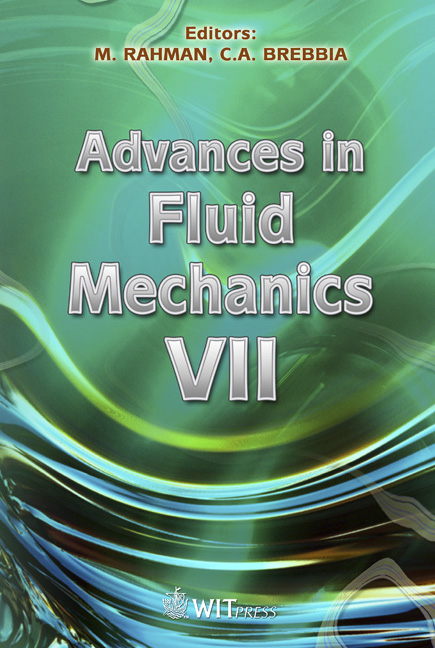A Five-equation Dissipative Model For The Simulation Of Two-phase Flows
Price
Free (open access)
Transaction
Volume
59
Pages
9
Page Range
257 - 265
Published
2008
Size
956 kb
Paper DOI
10.2495/AFM080251
Copyright
WIT Press
Author(s)
M. Labois, H. Guillard & M. Grandotto
Abstract
This work deals with the design of a five-equation dissipative model for the simulation of two-phase flows and its numerical approximation. Two-phase flows are usually modeled using the well-known one-pressure two-velocity model, which is not hyperbolic, or using a two-pressure two-velocity model, whose complexity makes it costly. Finally, five-equation reduced models can be used, but they feature a unique velocity, which makes them unable to reproduce complex flows. Our five-equation dissipative model is derived from the standard six-equation bifluid model using the Chapman-Enskog expansion technique. Developments to the first order lead to a hyperbolic system, and even if the model features only one velocity, dissipative second-order terms enable it to deal with velocity disequilibria. A finite-volume numerical approximation of this model using a fractional step approach is proposed. After the convective step, which takes into account the hyperbolicity of the convective part, the solution of the dissipative step is evaluated. Numerical tests are presented, where the capability of the model to deal with flow featuring phenomena due to velocity disequilibria is shown. Keywords: two-phase flows, velocity disequilibria, Chapman-Enskog expansion, finite-volume scheme. 1 Introduction Two-phase flows arise in a large range of applications, and their numerical simulations are still an issue. Mixture models are often used for this purpose. But there are situations where velocity disequilibria between the phases have to be
Keywords
two-phase flows, velocity disequilibria, Chapman-Enskog expansion, finite-volume scheme.





